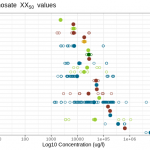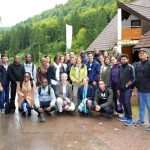In this post, Andreas Scharmüller introduces Standartox, a tool that continuously incorporates the ever-growing number of ecotoxicity test results in an automated process workflow. It provides single aggregated data points for a specific chemical-organism test combination that represents the toxicity of a chemical. These values can be used for the derivation of toxic units (TU) or species sensitivity distributions (SSD).
Continue readingStandartox – Standardizing Toxicity Data








